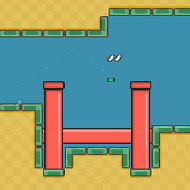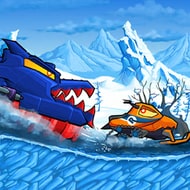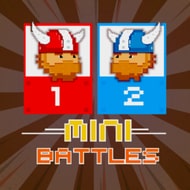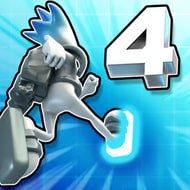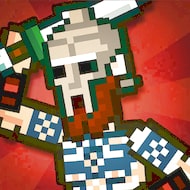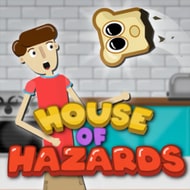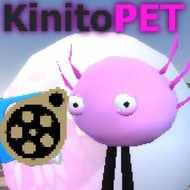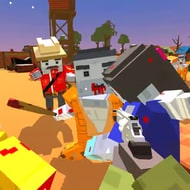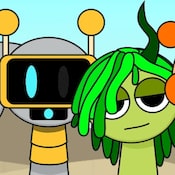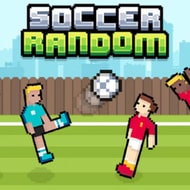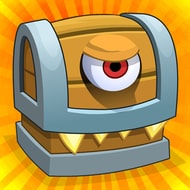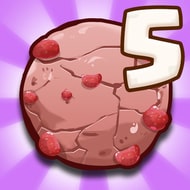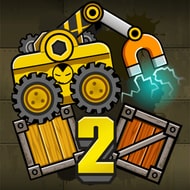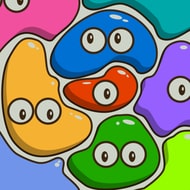
Dead Plate
 Fullscreen
Fullscreen
Dead Plate is a survival horror experience that challenges players to make quick decisions while trapped in a tense and unpredictable environment. The focus is not just on surviving one encounter but learning how to navigate a sequence of dangerous scenarios where danger can emerge from any corner. Every move matters, and every decision you take has consequences that can determine whether you reach the end or fail halfway through.
Core Gameplay and Main Objectives
At its heart, Dead Plate is about reaction, planning, and observation. The player is placed in a confined setting where they must avoid threats, solve tasks, and progress through areas that grow increasingly hostile. The game emphasizes close interaction with the environment, forcing you to pay attention to subtle signals and timing. Unlike many titles where victory depends on brute strength, here the focus is on awareness and control under pressure.
- Explore different rooms and paths, each presenting unique risks and opportunities.
- Survive encounters that often come without warning, requiring quick thinking.
- Adapt to new mechanics as you advance through later stages.
Levels and Progression System
The structure of Dead Plate is divided into stages that gradually increase in complexity. Early areas are designed to familiarize you with the mechanics, while later ones add layers of unpredictability. You may be asked to complete puzzles, monitor multiple threats at once, or make split-second choices to escape.
Each level introduces its own hazards. Sometimes you must remain silent and unnoticed, other times you must act quickly before a countdown runs out. The pacing ensures that no two stages feel identical, keeping the tension alive and preventing predictability. As you progress, the levels start combining previously learned elements, challenging you to recall earlier lessons under more difficult conditions.
Special Features and Mechanics
Dead Plate incorporates several distinctive mechanics that differentiate it from other survival-focused titles. The combination of environmental detail and reactive design ensures that each playthrough has its surprises. Beyond the standard survival loop, there are small but meaningful elements that shape the overall experience.
- Dynamic Triggers: Events can shift based on your previous choices.
- Hidden Paths: Secret areas may reward exploration but also increase risk.
- Behavioral Shifts: Enemies may change tactics depending on how you play.
Common Player Strategies
Success in Dead Plate depends on learning and applying different strategies. While every encounter may look overwhelming, developing consistent habits makes it easier to endure long runs. Many players find that a balance between caution and decisive action works best.
- Manage resources: Pay attention to what you use and when you use it.
- Learn enemy patterns: Observing movements often gives you a safe route.
- Stay calm: Quick panic decisions usually lead to failure.
- Test approaches: Trying different methods can reveal shortcuts or safer paths.
Hacks, Secrets, and Unlockables
For those who enjoy exploring beyond the main structure, Dead Plate contains hidden elements and secrets. Some of these are tucked away in obscure corners, while others require precise actions to reveal. While the game is designed to be played fairly, many players look for tricks that make survival easier or reveal alternative outcomes. Unlockable modes can add replay value, offering variations that modify rules or enemy behavior. The sense of discovery remains strong even after completing the primary stages, encouraging players to return for more attempts.
Frequently Asked Questions
Players often wonder what makes Dead Plate unique compared to other horror titles. The answers lie in its design philosophy and the way it encourages repeated experimentation. Below are some commonly asked questions:
- Is it possible to beat the game on the first try? While technically possible, most players require multiple runs to learn patterns.
- Does every level have only one solution? No, there are often several ways to progress, though some are riskier than others.
- Are the stages always the same? The core layout remains stable, but dynamic triggers and hidden paths create small differences each time.
- Can secrets affect the ending? Yes, some hidden elements influence how the story resolves.
Why Dead Plate Stands Out
What separates Dead Plate from other horror survival titles is the careful balance between intensity and strategy. The experience is not just about enduring fear but also about making sense of your surroundings and finding logical solutions under pressure. Every stage feels like a test of both nerve and problem-solving skills, which keeps the experience engaging long after the first playthrough. The mixture of shifting mechanics, hidden opportunities, and adaptive enemies ensures that no run feels exactly the same, encouraging players to return for more and refine their tactics with each attempt.
Dead Plate remains a tense and rewarding experience for players who enjoy survival under pressure. Its layered design, challenging stages, and hidden secrets give it depth beyond the standard horror formula. Whether you approach it cautiously or take risks for faster progression, the game keeps demanding your focus, rewarding patience, and punishing recklessness. Each session is an opportunity to test your skills and see how far you can go when every moment counts.

